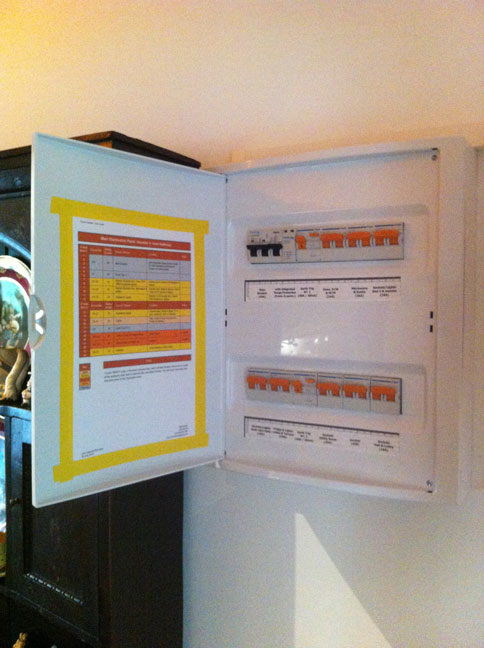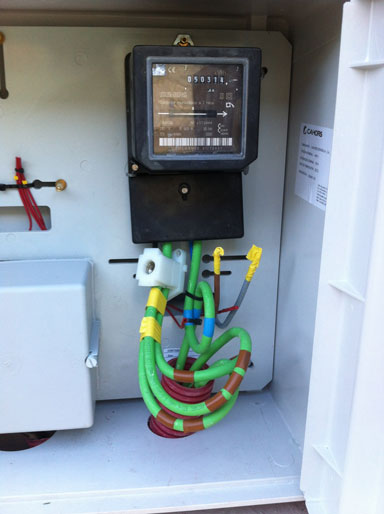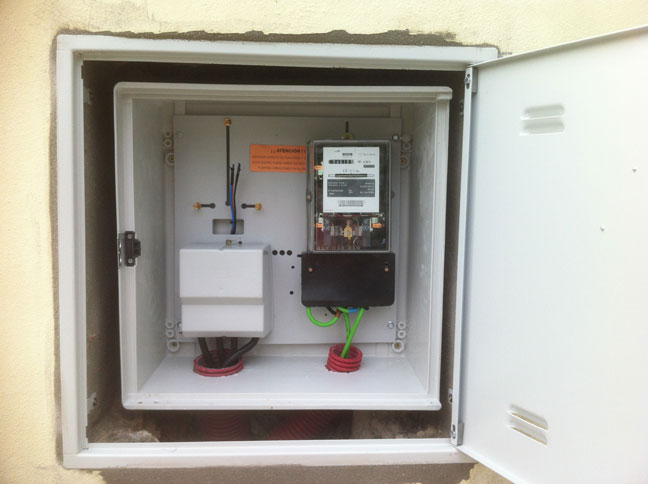Warning to 3-Phase Consumers!
In the past week I have received 3 calls from people who have problems with 3-phase supplies. These people had received their letter from Endesa, telling them to have their ICP fitted (see previous article Letter from Endesa re ICP). Having duly had their ICPs fitted, these callers are not at all delighted when they discover that they can’t run their washing machine and electric hob at the same time (or other appliances!). In fact one of them is now unable to boil a kettle! In this article I will try to explain why.
Those of you who are considering installing or upgrading to 3-phase may also find this article of use.
Most ‘dwellings’ have single-phase electricity, with a nominal supply voltage of 230 Volts. However, many larger homes and ‘campo fincas’ (country homes and plots) have 3-phase with a nominal supply of 400V. The higher voltage is required by certain well pumps, some motors and workshop machinery. I have installed one or two large ceramic hobs that also operate at 400V!
Q. I have electricity connected, but how can I tell whether I have a single- or 3-phase?
Check you last bill to find your ‘potencia contratada’ (in KW). Check the two tables on my Guide to Determine Energy Rating of Electricity Contract, to determine whether you have single- or 3-phase. If your ‘potencia contratada’ figure appears in the top main table you have single-phase. If your potencia appears in the bottom smaller table you have 3-phase.
If for some reason you do not receive bills, or your ‘potencia contratada’ is not shown on my guide, you may be able to look through the window of your electricity meter box and count the fuses, if you can see them! If there are 1 or 2 fuses then you have single-phase, 3 or 4 fuses then you have 3-phase. The circuit breakers in the consumer unit are also much bigger for 3-phase installations.
If you are unable to determine what type of supply you have, then you need a shockingly good electrician!
Q. What is the maximum power available at 3-phase?
For ‘limited’ supplies, with an ICP fitted, the maximum power (‘potencia contratada’) is 13,856KW, as restricted by a 20A ICP. However this only equates to 4,6KW for appliances rated at 230V. This is the major disadvantage with a 3-phase supply.
Check the bottom table in my Guide to Determine Energy Rating of Electricity Contract for ratings of ICP’s for 3-phase, then look up the ICP Rating in the main table to see the equivalent ‘potencia’ for single-phase.
The maximum rated ICP for a ‘limited’ 3-phase supply is only 20A. Of course, you can contract above this by opting for an ‘unlimited’ supply (with no ICP), but you will pay significantly more for your electricity.
As 3-phase power ratings (in KW’s) are calculated at 400V, the problem arises when connecting 230V [domestic] appliances to the supply.
For the ‘technically inclined’ amongst you, here is an example:
Your 3-phase supply is rated at 10,392KW; your recently fitted ICP is rated at 15A. If you plug in your kettle (rated say, at 2,18KW) and your air-conditioning unit (rated 3,57KW), your total load is calculated at 5,75KW at 230V.
Current (I) = Power (W) / Voltage (V) – bit of basic electrical theory for you!
Therefore,
Current = 5750 / 230 = 25 Amps !!
This clearly exceeds the 15A limit of your ICP. In this example, your ICP would ‘trip’ OFF!
In order to guarantee sufficient power, in the example above, to run both appliances at the same time, your 3-phase ICP would need to be at least 25A. Here lies the BIG problem, this is above the maximum rating for an ICP on a limited contract.
In order to have more than 4,6KW available at 230V on any given phase (of which there are three) on your 3-phase supply, you need to contract at 15KW or more. Consumers with such contracts do NOT have an ICP limiter; instead a digital “Maximetro” is installed in place of your old electricity meter. This digital device records peak-usage at 15-minute intervals. Your monthly bills are then calculated using this data.
If your ‘peak power’ recorded is way less than your ‘potencia contratada’ (power rating) then a discount (‘descuento’) will be applied to your bill. If your ‘peak power’ is in excess of your ‘potencia contratada’ then a surcharge (‘recargo’) will be applied to your bill.
Before you ask, I am already preparing my next ‘post’ for my shockingly good website, which will explain how to read and understand your 3-phase electricity bills!! I will post examples of both types of bill; limited supply with ICP (up to 13,856KW), and unlimited supply with Maximetro (15KW or more).
My advice to existing consumers; if your 3-phase ICP keeps ‘tripping’ OFF on a regular basis, upgrade your potencia contratada to 15KW or more and pay the higher bills(!), or convert your supply to single-phase, where you can contract up to a maximum power of 11,5KW.
It may well be much cheaper to change your 3-phase well pump to single-phase and switch your supply to single-phase, rather than face the huge bills you would have with an unlimited 3-phase supply.
My advice to anyone considering their options before installting an electricity supply, is opt for single-phase if you believe 11,5KW is sufficient. Three-phase supplies were only originally intended for commercial and industrial premises.
If you require, I can offer assistance to help you make any decisions necessary, I can perform load tests to identify ‘peak’ load, liase with Endesa and provide a quote for any work required to change your supply. You can contact me via email (see home page) or telephone me on +(34) 659 862 691.
19 August 2010



